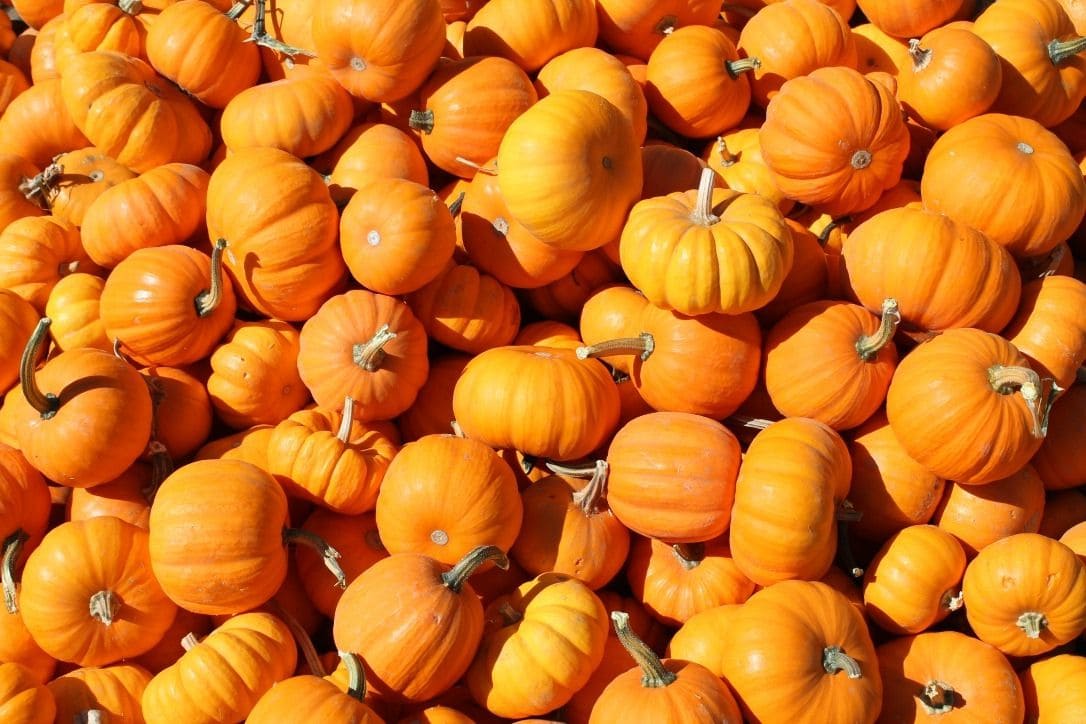Picture this: You’re carving your Halloween jack-o’-lantern, scooping out handfuls of stringy pulp and slippery seeds, when someone asks, “So, is that pumpkin actually a fruit or a vegetable?” You pause, orange goop dripping from your hands, suddenly unsure.
After all, you’ve used pumpkin in savory soups and sweet pies alike. It grows in patches like other gourds. But those seeds inside…
The answer might surprise you more than any Halloween ghost story. By the time you finish reading this, you’ll not only know the definitive answer but understand why this question reveals something fascinating about how we categorize the natural world—and how that knowledge can transform your cooking and gardening.
The Science Settles It: Pumpkins Are Fruits
Let’s cut straight to the scientific truth: pumpkins are fruits. This isn’t a matter of opinion or culinary preference—it’s botanical fact supported by plant scientists worldwide.
According to Joe Masabni, Ph.D., from Texas A&M AgriLife Extension Service, “scientifically speaking, pumpkins are a fruit because anything that starts from a single flower is classified botanically as a ‘simple fruit.'”
This definition has remained consistent across botanical institutions globally, making the classification remarkably clear-cut despite popular confusion.
Understanding the Flower-to-Fruit Journey
To truly grasp why pumpkins are fruits, imagine the remarkable transformation that occurs in your garden each summer.
A pumpkin plant sends out sprawling vines across the soil, eventually producing large, bright yellow flowers. These flowers come in two types: male flowers (left) that appear first, producing pollen, and female flowers (right) that develop slightly later with a tiny swelling at their base—the future pumpkin.
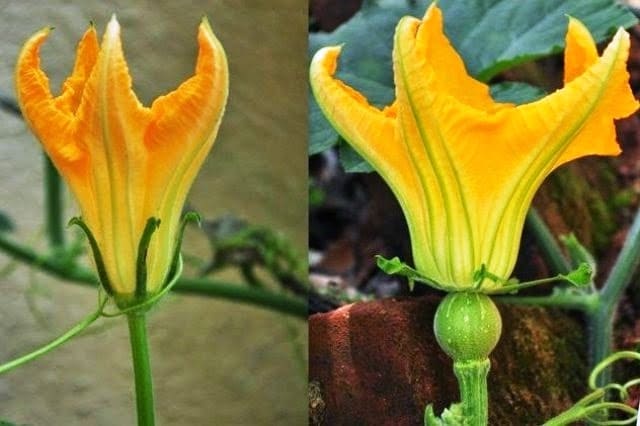
When bees visit these flowers, they transfer pollen from the male flowers to the female ones. This pollination triggers the female flower’s ovary to begin swelling and developing.
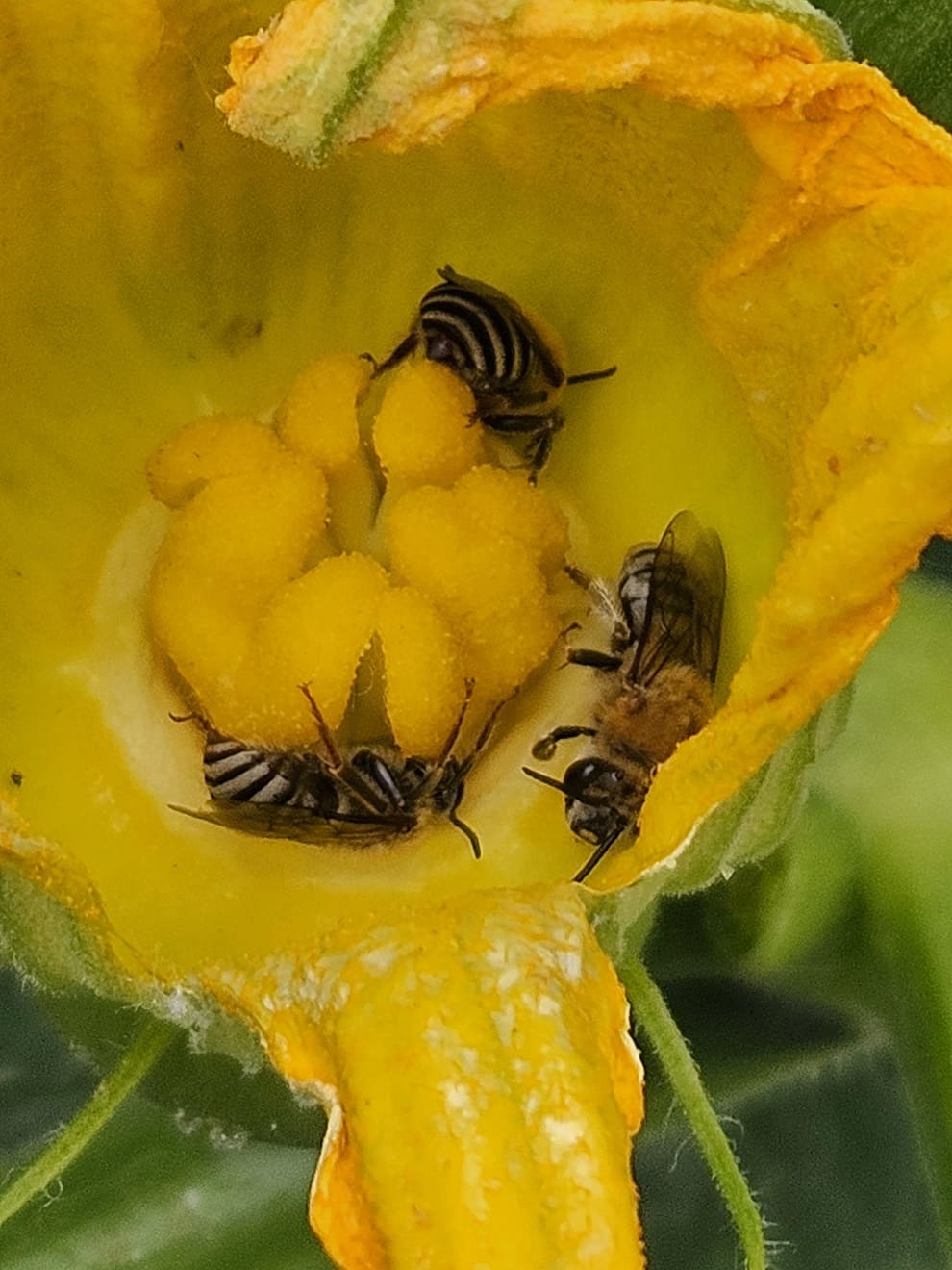
Over the following weeks, what started as a flower smaller than your thumb gradually transforms into the massive orange globe we recognize as a pumpkin. The flower petals eventually fall away, leaving only the developing fruit.
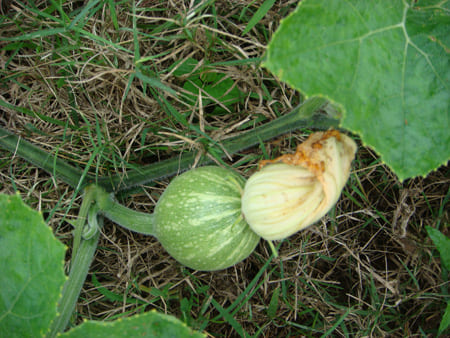
This process is identical to how apples develop from apple blossoms or how tomatoes form from tomato flowers. The botanical definition of fruit—the mature ovary of a flowering plant that contains seeds—captures this universal pattern of plant reproduction.
Pumpkins Are Actually Berries (Yes, Really)
Here’s where things get even more interesting. Pumpkins aren’t just fruits—they’re technically berries. Specifically, they’re called “pepos,” a specialized type of berry characterized by a hard outer rind and fleshy interior containing multiple seeds.
This classification puts pumpkins in surprisingly diverse company. Watermelons, cucumbers, and even bananas all qualify as berries under botanical definitions. Meanwhile, strawberries and raspberries, despite their names, aren’t true berries at all because they develop from flowers with multiple ovaries rather than a single ovary.
Understanding this classification helps explain why pumpkins share so many characteristics with other unexpected “berries”—they’re all designed by nature to protect and nourish seeds until they’re ready for dispersal.
👉 Here’s How to Grow White Strawberries: Pineberry Growing Guide & Care Tips
Why Your Kitchen Tells a Different Story
If pumpkins are scientifically fruits, why does this feel so counterintuitive? The answer lies in the fascinating disconnect between botanical science and culinary tradition—a gap that’s shaped how we think about food for centuries.
The Culinary Logic
In kitchens around the world, cooks have developed their own classification system based on practical considerations: flavor profile, preparation methods, and meal placement.
This culinary logic typically associates fruits with sweetness, raw consumption, and dessert courses, while vegetables are linked to savory applications, cooking requirements, and main meal components.
Pumpkins thoroughly confuse this system. Their mild, earthy flavor lacks the obvious sweetness we expect from fruits. They require cooking to become palatable, unlike many fruits that can be eaten fresh.
Most importantly, they appear equally in savory applications—think butternut squash soup or roasted pumpkin with sage—and sweet preparations like traditional pumpkin pie.
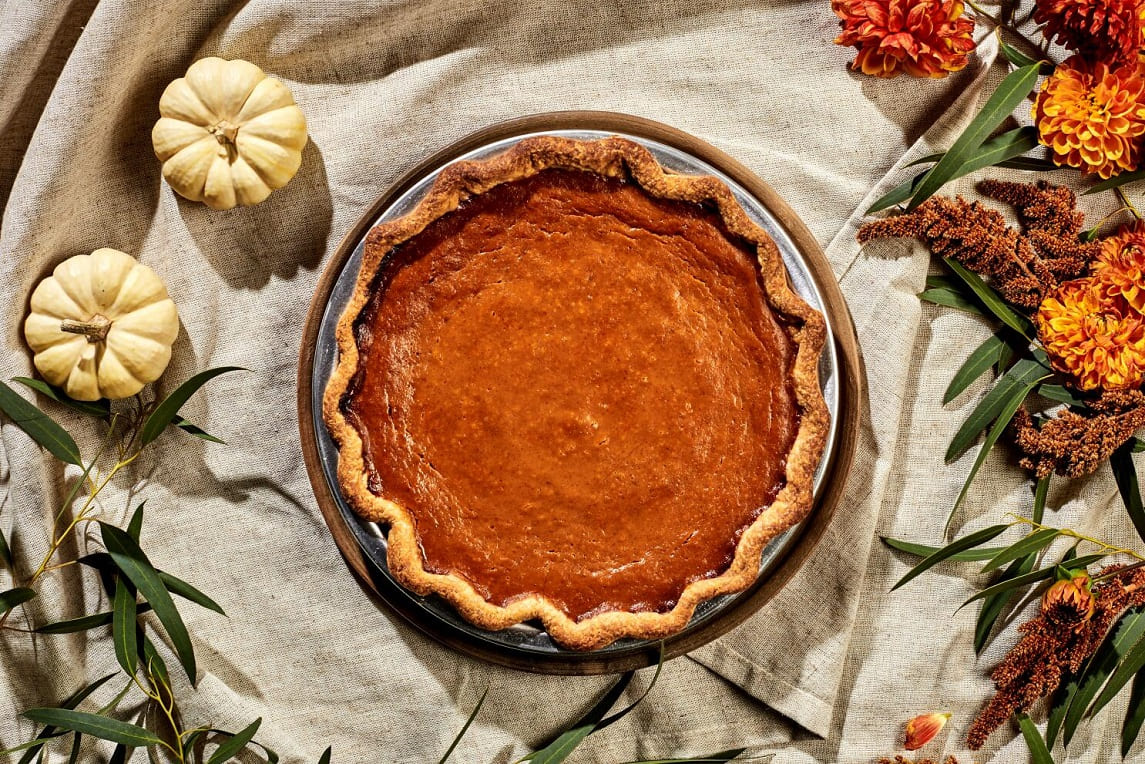
This versatility creates what nutritionists call the “pumpkin paradox.” Walk through any farmer’s market in October, and you’ll find pumpkins displayed alongside winter squash in the vegetable section, yet cookbooks feature pumpkin recipes in both vegetable and dessert chapters.
Both placements make perfect sense from a culinary perspective, even though only one aligns with botanical reality.
Cultural Variations in Classification
Different food cultures have resolved this paradox in fascinating ways. In many Asian cuisines, pumpkin and squash varieties appear almost exclusively in savory dishes—Thai curry, Japanese tempura, or Chinese stir-fries—cementing their vegetable identity.
Traditional Mexican cuisine embraces both sides, incorporating pumpkin into sweet desserts like calabaza en tacha (pumpkin in syrup) and savory moles that showcase its earthy complexity.
Australian cuisine has so thoroughly adopted pumpkin as a vegetable that roasted pumpkin appears alongside potatoes and carrots as a standard accompaniment to Sunday roasts. This cultural classification becomes so ingrained that many Australians are genuinely surprised to learn of pumpkin’s fruit status.
These cultural variations highlight an important truth: while botanical classification provides scientific accuracy, culinary classification reflects centuries of human creativity and cultural development in the kitchen.
The Distinguished Company of Botanical Fruits
Pumpkins join an impressive roster of foods that masquerade as vegetables while secretly being fruits. This botanical reality check affects more of your produce drawer than you might imagine.
Tomatoes lead this group as the most famous example—a classification so controversial it reached the U.S. Supreme Court in 1893. The court ruled tomatoes were vegetables for tariff purposes, prioritizing economic and culinary considerations over botanical accuracy. This legal precedent illustrates how deeply our cultural classifications influence even official decisions.
Peppers of all varieties, from sweet bell peppers to fiery habaneros, are fruits that develop from flowers and house seeds. Their savory applications in cooking have cemented their vegetable identity in most kitchens.
Eggplants, with their glossy purple skin and meaty texture, are technically berries—a fact that seems almost absurd until you remember they grow from flowers and contain numerous small seeds.
Cucumbers, despite their crisp freshness and common use in salads, are fruits closely related to melons. Avocados, increasingly popular for their creamy texture and healthy fats, are fruits with such large seeds that the entire fruit develops around a single massive pit.
Meanwhile, rhubarb flips the script entirely. This tart stalks that star in strawberry-rhubarb pies and jams are actually vegetables—specifically, leaf petioles. We’ve culturally adopted rhubarb as a fruit because of its role in sweet desserts, demonstrating how culinary use can override botanical reality in our minds.
The Remarkable Pumpkin Family Tree
Understanding pumpkins means appreciating their membership in one of the plant kingdom’s most diverse and economically important families. The Cucurbitaceae family encompasses over 900 species worldwide, creating a botanical network that connects some surprisingly diverse crops.
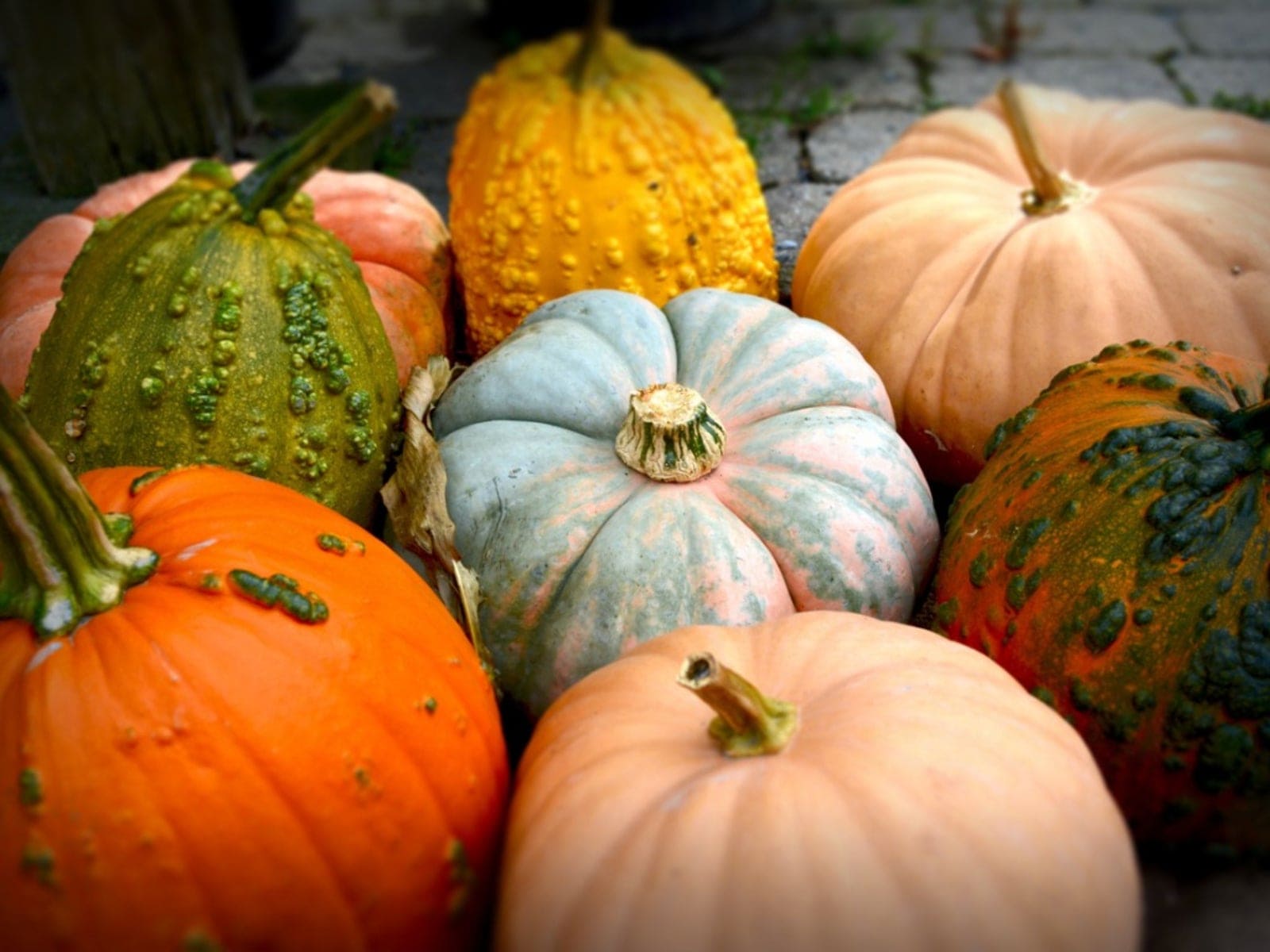
This vast family includes obvious relatives like winter squash (butternut, acorn, and Hubbard varieties) and summer squash (zucchini, yellow crookneck, and pattypan). But it also embraces melons—watermelon, cantaloupe, and honeydew—along with cucumbers and an array of ornamental gourds that grace autumn displays.
What unites this diverse family? All members share key characteristics: they grow on trailing or climbing vines, produce separate male and female flowers on the same plant, and develop fruits with similar internal structures. Most store their seeds in a central cavity surrounded by flesh of varying thickness and water content.
Navigating Pumpkin Varieties for Different Uses
The term “pumpkin” actually has no precise botanical meaning—it’s a cultural designation applied to certain orange, round members of the squash family. This linguistic flexibility has created delightful confusion but also remarkable diversity in what we call pumpkins.
Sugar pumpkins, also called pie pumpkins, typically weigh three to eight pounds and offer dense, fine-textured flesh with natural sweetness that makes them ideal for desserts. Their compact size and superior flavor make them the gold standard for homemade pumpkin puree, though they’re often overlooked in favor of larger, more dramatic varieties.
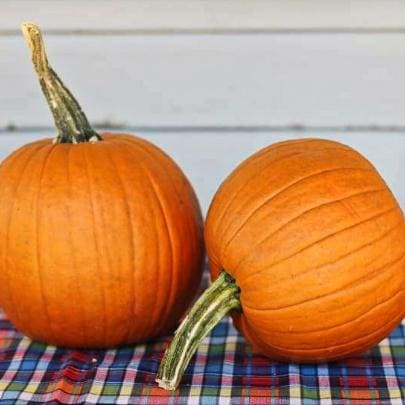
Jarrahdale pumpkins, an Australian heirloom variety, bring blue-gray skin and sweet orange flesh that works beautifully in both sweet and savory applications. Their distinctive appearance makes them popular for autumn decorating, but their culinary qualities shouldn’t be overlooked.
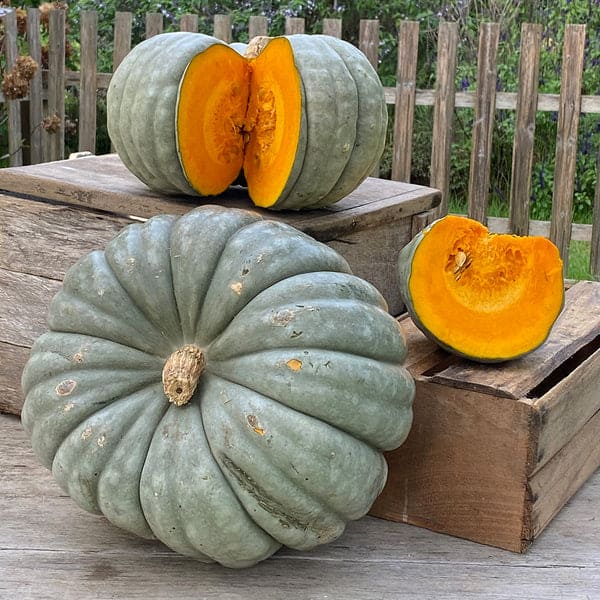
For serious cooking enthusiasts, Musquee de Provence pumpkins (often called Fairytale pumpkins) offer deeply ridged, tan-colored exteriors and exceptionally flavorful flesh that French cooks have prized for generations. Their complex, nutty flavor elevates soups and gratins beyond ordinary squash preparations.
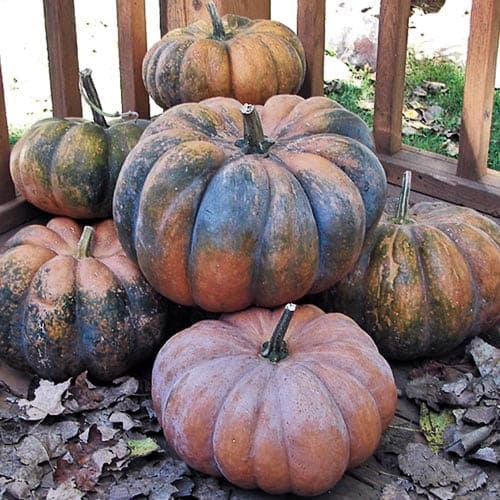
On the opposite end of the spectrum, Atlantic Giant pumpkins can exceed 1,000 pounds, representing the extreme end of selective breeding for size rather than flavor. These behemoths make spectacular jack-o’-lanterns and competition entries but offer watery, bland flesh that’s better left for carving than cooking.

The Complete Nutritional Picture
Beyond resolving the fruit-versus-vegetable debate, understanding pumpkin’s nutritional profile reveals why this botanical fruit deserves superfood status regardless of how you classify it culinarily.
Vitamin A Powerhouse and Vision Protection
Pumpkin’s most impressive nutritional claim centers on vitamin A content, primarily delivered through beta-carotene—the compound responsible for that distinctive orange color.
A single cup of cooked pumpkin provides over 240% of your daily vitamin A requirement, making it one of the most concentrated food sources of this essential nutrient.
This abundance matters more than you might think. Vitamin A supports multiple body systems simultaneously: it maintains the health of your retinas and can help prevent night blindness, supports immune system function by maintaining healthy mucous membranes, and promotes proper cell development throughout your body.
The antioxidant properties of beta-carotene also help protect cells from damage caused by free radicals.
The Mineral Matrix and Heart Health
Pumpkin delivers impressive amounts of potassium—about 564 milligrams per cup—rivaling bananas as a heart-healthy mineral source. This potassium works with magnesium (also abundant in pumpkin) to support healthy blood pressure and proper muscle function, including the crucial cardiac muscle that keeps your heart beating steadily.
The fiber content, at nearly three grams per cup, supports digestive health while helping stabilize blood sugar levels. This combination of fiber with naturally low calories (only 49 per cup) makes pumpkin an excellent choice for weight management, providing satisfaction and nutrition without excess energy.
The Hidden Treasure of Pumpkin Seeds
Those slippery seeds you scoop out during jack-o’-lantern carving represent a nutritional goldmine that many people discard without a second thought. Pumpkin seeds, or pepitas, offer a complete different nutritional profile that complements the flesh perfectly.
An ounce of roasted pumpkin seeds provides about nine grams of protein—more than many nuts—along with healthy monounsaturated and polyunsaturated fats that support heart health.
They’re particularly rich in magnesium, providing about 37% of your daily requirement in just one ounce. This magnesium supports bone health, helps regulate blood pressure, and plays crucial roles in muscle and nerve function.
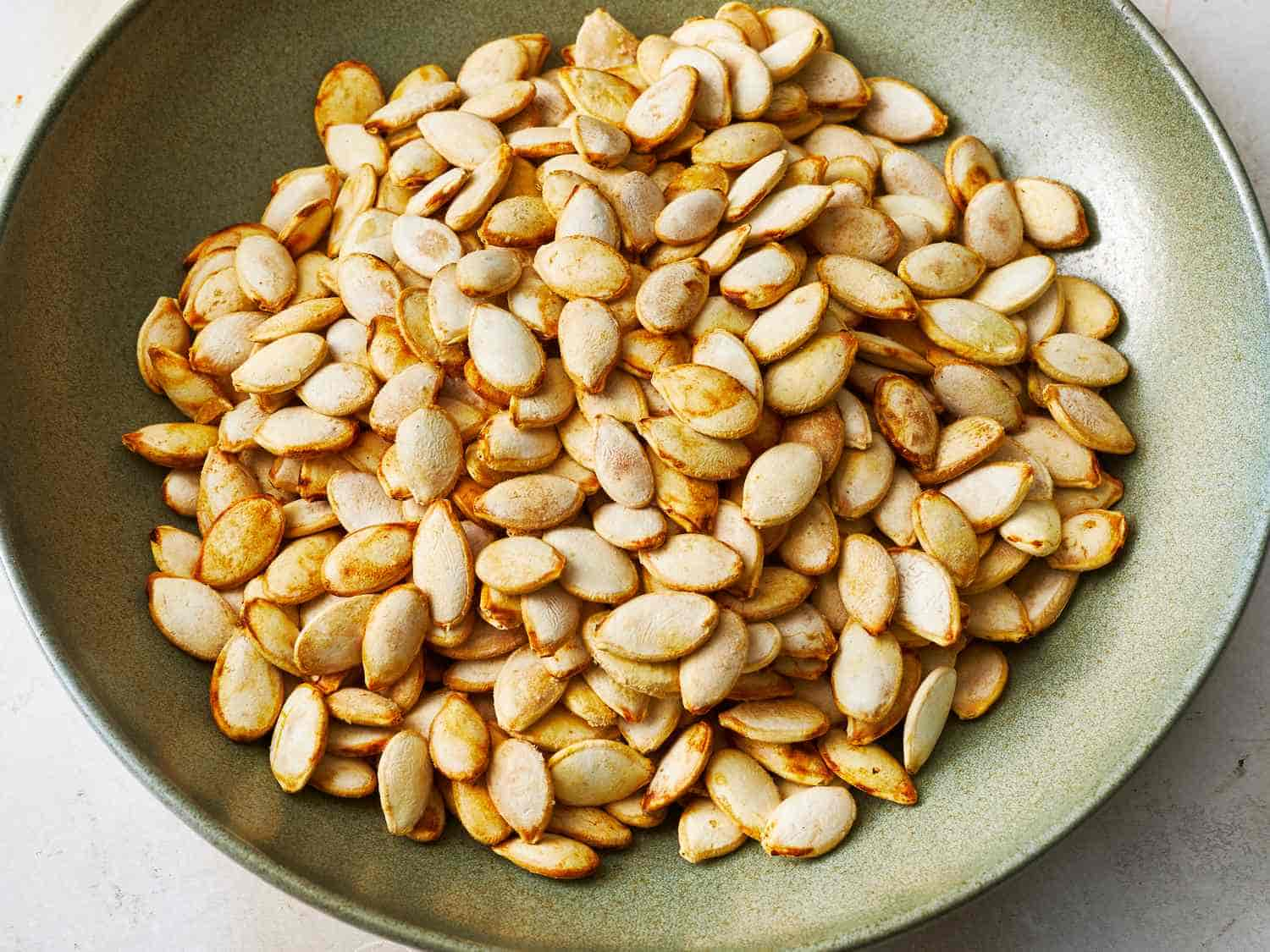
Zinc content in pumpkin seeds rivals that found in meat, making them an excellent choice for supporting immune function and wound healing. They also provide iron, phosphorus, and manganese, creating a mineral profile that supports everything from energy metabolism to bone development.
From Garden to Table: Practical Growing and Harvesting Wisdom
Understanding pumpkins as fruits rather than vegetables actually provides valuable insights for both growing and using them effectively. This botanical knowledge translates directly into practical benefits for gardeners and cooks alike.
The Art and Science of Pumpkin Pollination
Since pumpkins are fruits that develop from flowers, successful growing depends entirely on effective pollination. Pumpkin plants produce male flowers first, usually appearing about a week before female flowers emerge. This timing ensures pollen is ready when female flowers open.
Each flower opens for just one day, and only during morning hours when temperatures are cool and humidity is high. This narrow window means reliable pollinator activity becomes crucial for fruit development. If you’re growing pumpkins and notice flowers but no developing fruits, inadequate pollination is often the culprit.
Gardeners can hand-pollinate by removing male flowers in the early morning, peeling back the petals to expose the pollen-covered stamen, and gently brushing this against the stigma inside female flowers. This technique ensures fruit development even when bee activity is limited by weather or environmental factors.
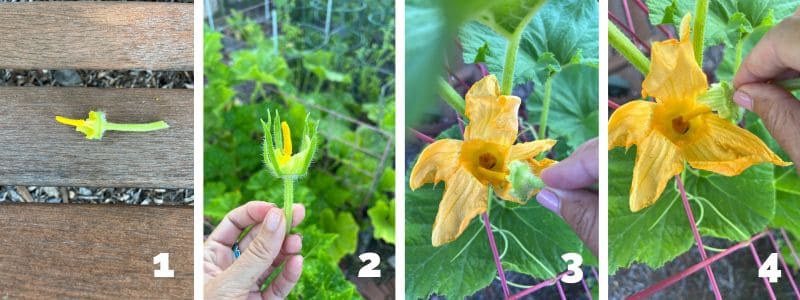
Harvest Timing and Storage Mastery
Knowing when to harvest pumpkins requires understanding their fruit biology. Unlike vegetables that might be harvested at various stages of maturity, pumpkins need to reach full ripeness on the vine to develop proper storage characteristics and optimal flavor.
A mature pumpkin will have developed its full color (whatever that might be for the variety), sound hollow when tapped, and have a hard rind that resists fingernail pressure. The stem should appear dry and woody rather than green and fleshy.
Most importantly, the ground spot—where the pumpkin rested on soil—should be deep orange or yellow rather than white or pale green.
👉 Read the Ultimate Guide to Choosing Ripe Watermelons: Expert Tips and Tricks
Proper storage extends the life of your fruit harvest significantly. Whole, undamaged pumpkins store best in cool, dry conditions around 50-55°F with good air circulation. Under these conditions, many varieties maintain quality for three to six months, with some thick-skinned varieties lasting even longer.
Selecting and Preparing Pumpkins for Optimal Results
When shopping for cooking pumpkins, apply the same criteria you’d use for any high-quality fruit. Look for specimens that feel heavy for their size, indicating dense flesh with high moisture content. The skin should be hard and free from soft spots, cuts, or blemishes that could allow bacteria to enter.
For cooking applications, smaller pumpkins generally offer better flavor and texture than their oversized cousins. A three to five-pound sugar pumpkin typically provides superior results compared to a fifteen-pound carving variety, even though the larger pumpkin offers more volume.
Preparing fresh pumpkin for cooking involves techniques that work well for any large fruit. Cut the pumpkin in half from stem to bottom, scoop out seeds and stringy pulp, then roast cut-side down at 400°F until the flesh becomes tender—usually 30-45 minutes depending on size.
The roasted flesh can then be scooped from the skin and used immediately or frozen for future use.
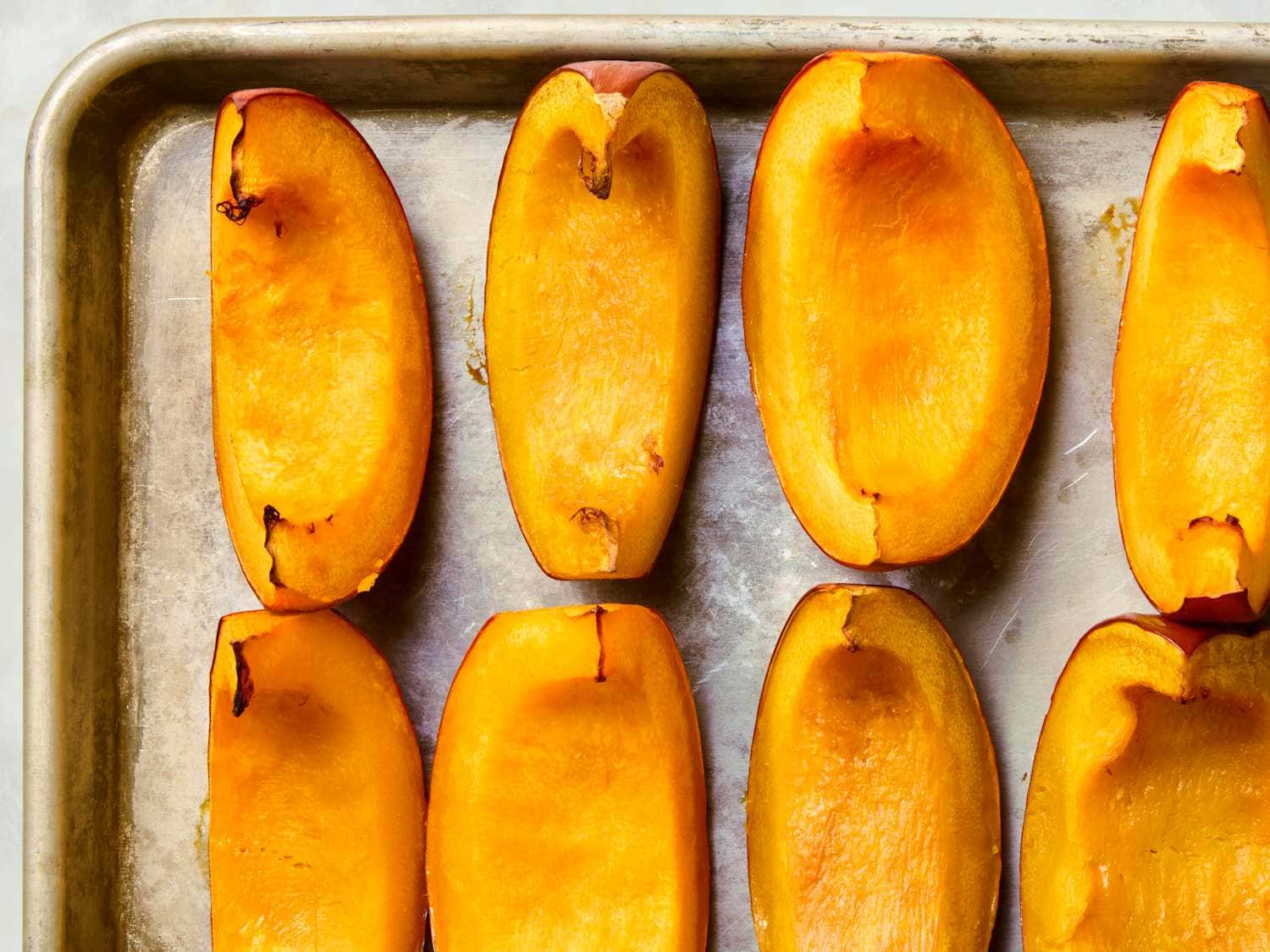
Global Perspectives: How the World Views Pumpkin
The fruit-versus-vegetable classification of pumpkins varies dramatically across cultures, revealing fascinating insights into how different societies have integrated this New World crop into their culinary traditions.
In India and Southeast Asia, pumpkin varieties appear almost exclusively in savory contexts—curries, dals, stir-fries, and vegetable dishes that emphasize their substantial texture and ability to absorb complex spice blends.
Traditional Indian cooking treats pumpkin as a hearty vegetable that pairs beautifully with legumes and grains, rarely appearing in sweet preparations.
Mexican cuisine showcases the remarkable versatility that originally inspired European adoption of pumpkins. Traditional Day of the Dead celebrations feature candied pumpkin (calabaza en tacha) as a sweet offering, while everyday cooking incorporates pumpkin into complex moles and savory stews.
This dual usage reflects a sophisticated understanding of pumpkin’s potential that many other cultures haven’t fully explored.
Japanese cuisine has embraced kabocha squash (a pumpkin variety) as a standard vegetable that appears in tempura, simmered dishes, and traditional vegetable preparations. The Japanese approach emphasizes the natural sweetness while maintaining savory applications, creating a middle ground that honors both perspectives.
European traditions, established after Columbus brought pumpkins from the Americas, tend to segregate uses more strictly. French cuisine treats pumpkin primarily as a vegetable for soups and gratins, while Italian cooking incorporates it into both pasta dishes and seasonal risottos.
However, European dessert traditions have been slower to embrace pumpkin compared to American innovations like pumpkin pie.
👉 Learn about Eco-Friendly Pumpkin Disposal: Sustainable Ways to Reuse Your Halloween Pumpkins
Legal and Regulatory Realities
The practical implications of pumpkin classification extend beyond kitchens and gardens into the realm of government regulation and commerce. The U.S. Department of Agriculture officially classifies pumpkins as vegetables in their dietary guidelines and food group recommendations, prioritizing nutritional function over botanical accuracy.
This regulatory approach makes practical sense for public health messaging. Pumpkins provide the nutritional benefits typically associated with vegetables—fiber, vitamins, minerals, and low calorie density—rather than the simple sugars and quick energy associated with most fruits.
Grouping pumpkins with vegetables encourages their consumption as part of balanced meals rather than as occasional treats.
Agricultural regulations follow similar logic. Pumpkin crops are typically managed, subsidized, and regulated alongside other vegetable crops rather than fruit crops, reflecting growing methods and market channels that align more closely with vegetable production systems.
Resolving the Beautiful Contradiction
Rather than viewing the fruit-versus-vegetable classification as a problem requiring resolution, we can embrace pumpkin’s dual identity as evidence of nature’s complexity and human adaptability.
The botanical classification as fruit provides essential understanding for gardeners, educators, and anyone interested in plant biology. This knowledge helps explain growing requirements, harvest timing, and storage characteristics that directly impact success with pumpkin cultivation and use.
The culinary classification as vegetable reflects centuries of human creativity and cultural development. Our ancestors recognized pumpkin’s potential in savory applications and developed techniques that maximize its culinary value in ways that often ignore botanical realities.
Both perspectives offer value, and both deserve respect. When teaching children about plants, botanical accuracy matters. When planning dinner or organizing your grocery shopping, culinary practicality takes precedence.
The Takeaway That Changes Everything
Understanding that pumpkins are fruits disguised as vegetables opens up new possibilities for both cooking and growing.
This knowledge might inspire you to experiment with treating pumpkins more like other fruits—perhaps roasting chunks with cinnamon and brown sugar, adding them to fruit salads for unexpected texture, or exploring sweet applications beyond traditional pie.
For gardeners, recognizing pumpkin’s fruit nature emphasizes the critical importance of pollination and helps explain why some pumpkin plants produce flowers but no fruit. This understanding can guide decisions about garden layout, variety selection, and harvest timing.
Most importantly, pumpkin’s dual identity reminds us that nature rarely fits into the neat categories we create. The most interesting and valuable plants often challenge our assumptions and reward our willingness to think beyond conventional boundaries.
Whether you call them fruits or vegetables, pumpkins represent agricultural success, culinary versatility, and nutritional abundance.
They’ve traveled from Central American villages to global markets, adapting to countless climates and cultures while maintaining their essential character. That’s a remarkable achievement for any plant, regardless of how we choose to classify it.
Next time you encounter a pumpkin—whether you’re carving it, cooking it, or simply admiring its presence in an autumn display—you’ll appreciate both its scientific reality as a fruit and its cultural role as a vegetable. In a world that often demands choosing sides, pumpkins remind us that sometimes the best answer is “both.”
